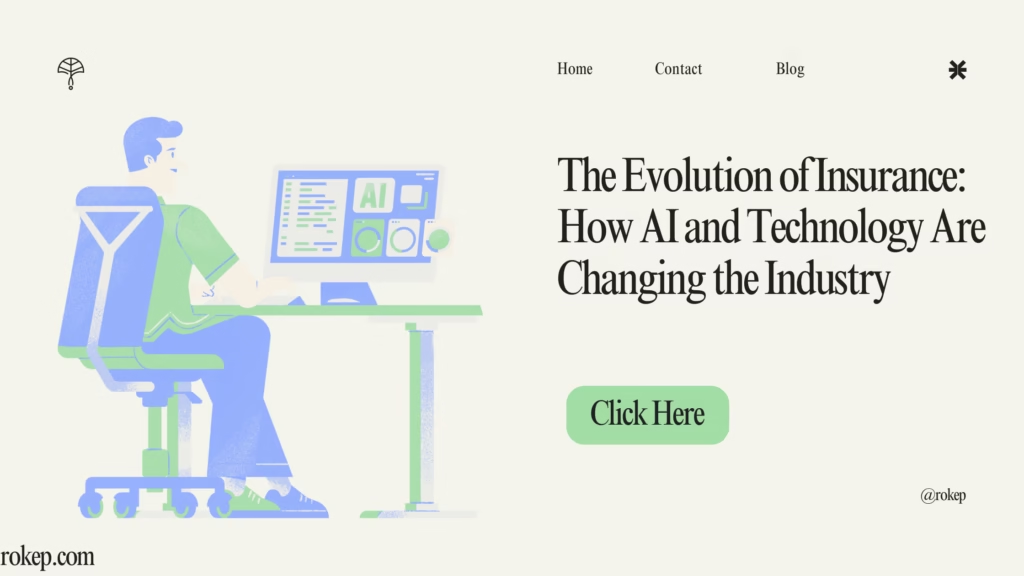In an age where artificial intelligence (AI) and advanced technologies are reshaping industries, the insurance sector is undergoing a remarkable transformation. From streamlining claims processing to personalizing customer service, insurers are leveraging cutting-edge tools to enhance efficiency, accuracy, and user experience. These innovations are not only redefining traditional practices but also creating a more dynamic, customer-centric approach to risk assessment and management.
This article explores the evolution of insurance in the digital age, highlighting key connection between ai and technology. Technologies like AI-driven chatbots, predictive analytics, blockchain, and the Internet of Things (IoT). With government and industry studies validating these trends, the impact of technology on the insurance sector is undeniable.
The Traditional Insurance Model: A Slow but Sure System
Historically, the insurance industry has relied on labor-intensive processes to assess risk, underwrite policies, and manage claims. While effective in its time, the traditional model often suffered from inefficiencies, lengthy processing times, and limited personalization. Customers frequently faced delays in claims settlement or experienced frustration with generic coverage options that did not cater to individual needs.
The emergence of new technologies has disrupted this paradigm, enabling insurers to not only meet customer expectations but exceed them. Through automation and data-driven insights, the modern insurance industry is delivering faster services and tailored solutions.
AI-Powered Tools: The Core of Modern Insurance Operations
One of the most transformative advancements in insurance is the integration of AI. By automating complex tasks and analyzing massive datasets, AI enhances decision-making, reduces operational costs, and improves customer interactions.
1. Chatbots and Virtual Assistants
AI-powered chatbots have revolutionized customer service by offering instant support and guidance. Unlike traditional call centers, which are limited by human availability, chatbots provide 24/7 assistance. For example, Lemonade Insurance’s chatbot, Maya, enables users to purchase policies and file claims seamlessly within minutes.
Chatbots also utilize natural language processing (NLP) to understand customer inquiries and provide accurate responses. This reduces the burden on human agents, allowing them to focus on complex cases while ensuring routine queries are resolved efficiently. A report from the U.S. Federal Insurance Office highlights the importance of digital tools in improving customer satisfaction within the insurance sector.
2. Predictive Analytics for Risk Assessment
AI’s ability to analyze historical data and identify patterns has led to the rise of predictive analytics in underwriting and claims management. Insurers now use these tools to evaluate potential risks with greater precision.
For example, auto insurers can leverage telematics devices that track driving behavior, such as speed and braking patterns, to calculate personalized premiums. Similarly, health insurers analyze lifestyle factors, such as exercise habits and dietary preferences, to offer customized health plans. According to a report by the National Association of Insurance Commissioners (NAIC), predictive analytics improves the accuracy of risk assessment, enabling insurers to develop fairer pricing models.

Blockchain Technology: Revolutionizing Data Security and Claims Processing
Blockchain, often associated with cryptocurrency, is proving to be a game-changer for the insurance industry. By creating immutable records, blockchain enhances transparency and reduces fraud—a persistent issue in claims processing.
Streamlining Claims Management
Traditionally, claims processing involves multiple intermediaries, resulting in delays and increased costs. Blockchain simplifies this process by storing verified data in a decentralized ledger accessible to all parties. Smart contracts, which automatically execute when predefined conditions are met, further expedite claims settlement.
For instance, AXA Insurance has implemented a blockchain-based flight delay insurance policy. If a customer’s flight is delayed beyond a specified duration, compensation is automatically triggered without the need for filing a claim.
Enhancing Data Security
With the growing threat of cyberattacks, safeguarding sensitive customer information is paramount. Blockchain’s encryption protocols ensure that policyholder data remains secure, reducing the likelihood of breaches. A study by the National Institute of Standards and Technology (NIST) emphasizes blockchain’s potential in enhancing cybersecurity across industries, including insurance
The Internet of Things (IoT): Enabling Real-Time Risk Monitoring
The IoT—a network of connected devices that communicate and share data—has introduced real-time risk monitoring to the insurance sector. IoT devices gather actionable insights, allowing insurers to take proactive measures and incentivize safer behaviors.
Usage-Based Insurance
Auto insurers have embraced IoT-enabled telematics to introduce usage-based insurance (UBI). Devices installed in vehicles monitor driving patterns, offering lower premiums to safe drivers. This not only reduces accidents but also fosters accountability among policyholders.
Smart Home Technology
Home insurers are leveraging IoT devices like smoke detectors and water leak sensors to minimize property damage. These devices alert homeowners and insurers to potential risks, such as fire or flooding, allowing for swift intervention. The Federal Emergency Management Agency (FEMA) recognizes the role of technology in disaster prevention and response, further validating the benefits of IoT-driven risk mitigation.
Customer-Centric Innovations: A New Era of Personalization
In the past, one-size-fits-all policies often left customers dissatisfied. Today, insurers are using data analytics and AI to create hyper-personalized policies tailored to individual needs.
Dynamic Pricing Models
Traditional pricing models often failed to account for unique risk profiles. By analyzing real-time data, insurers can now offer dynamic pricing that adjusts based on individual behaviors and circumstances. This not only ensures fairness but also increases customer retention.
On-Demand Insurance
The gig economy and changing consumer preferences have fueled the demand for flexible insurance options. Startups like Trov and Slice offer on-demand insurance, allowing customers to activate coverage only when needed. This model is particularly appealing to freelancers and gig workers who require temporary protection.
The Challenges of Technology Adoption in Insurance
Despite its transformative potential, the adoption of technology in insurance is not without challenges.
1. Regulatory Hurdles
Insurance is a heavily regulated industry, and integrating new technologies requires compliance with complex legal frameworks. Insurers must navigate these regulations to ensure their innovations meet government standards. The U.S. Department of the Treasury provides guidelines on regulatory compliance for financial institutions, including insurers.
2. Ethical Considerations
AI and data analytics raise ethical concerns, particularly regarding privacy and bias. Insurers must strike a balance between leveraging data for personalization and safeguarding customer rights. Transparent policies and adherence to guidelines like those issued by the Federal Trade Commission (FTC) are essential.
3. Workforce Transformation
The shift toward automation has led to concerns about job displacement within the industry. Insurers must invest in reskilling programs to ensure employees can adapt to evolving roles that require technical expertise.
The Future of Insurance: A Technology-Driven Landscape
The ongoing evolution of insurance points to a future where technology will play an even more significant role. Emerging trends include:
- AI-Powered Fraud Detection: Advanced algorithms will identify fraudulent claims with greater accuracy, reducing losses and ensuring fairness.
- Parametric Insurance: This model uses predefined triggers, such as natural disasters, to automatically pay claims, providing faster relief to policyholders.
- Digital Ecosystems: Integrated platforms will enable customers to manage policies, file claims, and access related services seamlessly.
As the industry continues to innovate, insurers that embrace technology will be better positioned to meet the demands of a rapidly changing world.
Conclusion
AI and technology have ushered in a new era for the insurance industry, transforming how companies assess risk, process claims, and serve customers. From AI-driven chatbots and predictive analytics to blockchain and IoT, these advancements offer unparalleled efficiency and personalization.
While challenges like regulatory compliance and ethical considerations remain, the benefits of technological integration far outweigh the drawbacks. By adopting these innovations responsibly, insurers can build a more resilient, customer-focused industry that meets the needs of the modern era.
For more information on insurance trends, visit resources like FEMA, NIST, and the NAIC.
